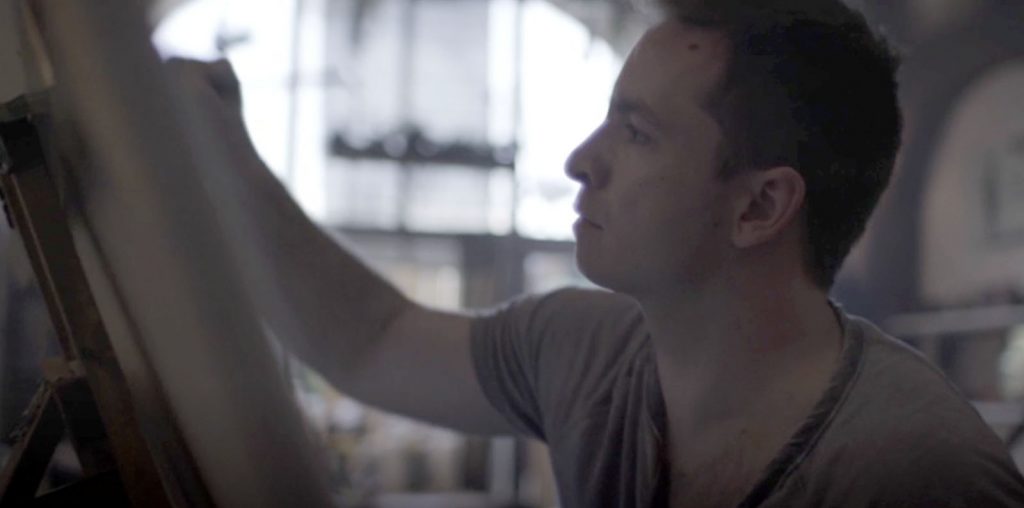
In 1955, Allen Ginsberg wrote his most famous poem, Howl, about…well…there are a lot of differing opinions of what Howl is really about. Is it about homosexuality in 1950s America? Is it about the social disillusionment of the Beat culture? Or is it just about saying dirty words and talking about wieners? Rob Epstein and Jeffrey Friedman’s film, “Howl,” uses this famous poem, Ginsberg’s recorded interviews, and the transcripts of an obscenity trial to explore the meaning of the poem. At times presented as a conventional bio-pic, and at other times coming across as a more obscure art film, “Howl” utilizes a lot of interesting approaches. But it never takes full advantage of its unique form.
While Ginsberg (James Franco) reads the poem, Howl, in its entirety, animated sequences illustrate the poem’s meaning. It is as though, because of its ability to depict what cannot be shown in live action, animation is the filmic form of poetry. There are no visual boundaries in animation, and the choice to use this form was appropriate. Unfortunately, the execution didn’t live up to the idea. The animation is conventional and boring. Epstein and Friedman use computer generated images when they should have branched out into other styles of animation that match Ginsberg’s original intentions. As it stands, the animated sequences are too sleek, too character driven, and too limited.
The obscenity trial that questioned whether the poem could be published for the general public was an interesting aspect of the film. Big character actors like Mary Louise Parker and Jeff Daniels make short appearances as narrow-minded literary critics. But there was also an emotional aspect to the trial that seemed forced. Without any character background of the key players (this trial did not concern Ginsberg directly) it’s hard to care about them, personally. By adding bio-pic characteristics (like newspaper headlines and a crawl at the end describing the future of everyone involved) the emotional distance the film creates comes across as a mistake.
Allen Ginsberg was quite a character. Which means that James Franco has a great subject to impersonate. As good looking as always (though a terrible fake beard hinders his babe-itude), Franco has the inflection and gestures of Ginsberg down pat. His reading of Howl is, at times, funny and at other times heartbreaking. He is confident and charming. It’s just too bad that the film he’s in doesn’t back him up.

